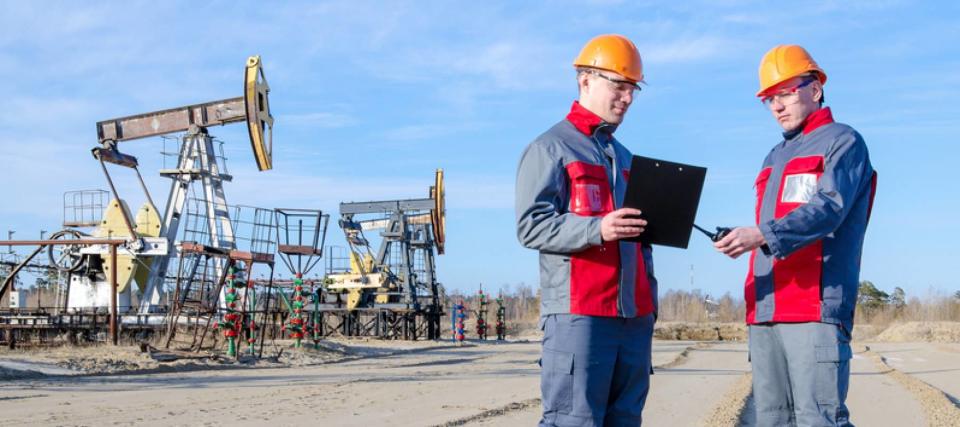No other nation in the world produces more oil than the US — so why do we count on countries like Saudi Arabia to supply us with crude?

While the U.S. is the world’s top producer of oil, it’s also the world’s top gas guzzler.
Inflation, spurred by supply chain issues and Russia’s war in Ukraine has driven up the cost of this valuable resource. On top of that, Hurricane Ian forced offshore producers in the U.S. to scale back production.
Even the head of Saudi Arabia’s state-led oil company, Saudi Aramco, is concerned. Earlier this month, he issued a dire warning that prices could spike soon due to Aramco's “extremely low” capacity.
Which means Americans should be preparing for a very expensive winter.
But with President Biden set to release 25 million more barrels of the country’s “oil piggy bank” to the market by the end of the year and the supply of diesel running dangerously low, many Americans may be wondering why not just hold onto that supply to keep the lights on here?
At $60 or more for a tank, it can be frustrating to watch as domestic oil leaves U.S. ports faster than foreign oil comes in. But it’s a decades-old challenge, and only the nature of the crisis has changed.
Don't miss
Over 65% of Americans don't shop around for a better car insurance deal — and that could be costing you $500 a month
You could be the landlord of Walmart, Whole Foods and Kroger (and collect fat grocery store-anchored income every quarter)
A TikToker paid off $17,000 in credit card debt by cash stuffing – can it work for you?
Leading from behind
The United States is the world’s top producer of oil (including crude, other petroleum liquids, and biofuels) and has been since 2018. According to the U.S. Energy Information Agency, it’s not even close.
The EIA reports that as of 2021, the U.S. produced 18.88 million barrels per day — or about 10 million per day more than no. 2 Saudi Arabia (10.84 million) and no. 3 Russia (10.78 million).
The EIA also notes that the U.S. is the largest oil consumer, using 20.54 million barrels a day, or 20% of the global stock, and well ahead of no. 2 China (14.01 million). The U.S. imported 7.86 million barrels of oil per day last year, the EIA report reveals.
So if America is producing roughly the same amount of oil as it imports, and interest in renewables is rising, shouldn’t it be true that the U.S. would not be so reliant on foreign oil, and that energy price anxieties should subside because U.S. stocks would be more than adequate?
Not by a long shot.
Oil price and politics
The reasons for the import/export discrepancy are actually fairly straightforward. Chief among them:
Foreign oil is cheaper: The cost of extraction is usually lower in other countries.
Rystad Energy, a private energy research firm, found in a 2020 analysis that Middle Eastern oil fields have the world’s lowest production cost at $31 a barrel. The U.S. produced oil from deepwater wells was at $43 a barrel, with fracking-produced oil costing $44 a barrel.
Energy as a weapon: Prices are frequently connected to how nations regard the environmental, economic and geopolitical impacts of their oil.
Some concerns weigh heavier than others. Russia, for instance, is widely seen as using oil as a tool to gain concessions over its invasion of Ukraine.
The Russian invasion eventually prompted President Biden to sign a ban on Russian oil imports, but it’s unclear how much the ban has deterred Vladimir Putin. Europe now faces new uncertainty about accessibility to critical Russian oil ahead of winter.
Not all oil is the same: This is a fundamental challenge for the U.S., where much of the nation’s refining capacity is built to handle the heavy, harder-to-refine crude imported from the Middle East and elsewhere. That U.S. capacity wasn’t aimed at refining the kind of light, sweet crude that characterizes the flush oil fields of Oklahoma, Texas, and elsewhere.
Shifting U.S. refining capacity to light crude could create incredible upheaval in the market and jeopardize enormous existing investments, the American Petroleum Institute says.
Attempts to correct that mismatch have almost always stalled out, often over environmental protests or other political realities. Most believe the current situation won’t change until new refining capacity comes online or the current capacity is upgraded to handle what the U.S. produces. The costs of such a shift would be enormous.
What to read next
‘Unhealthy and unsustainable’: Homebuyers aren’t buying and homebuilders aren’t building in the face of untamed mortgage rates
The US now has just 25 days of diesel supply — the lowest since 2008. Here's why that's more alarming than a dwindling 'oil piggy bank'
'Not the time to get greedy': Home flippers are now getting burned by the US housing downturn, slashing prices to cut losses — here are two big reasons why
This article provides information only and should not be construed as advice. It is provided without warranty of any kind.
